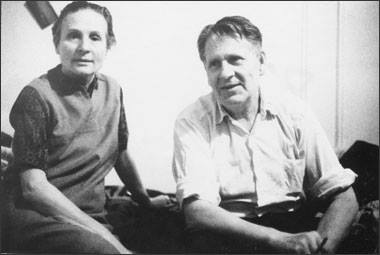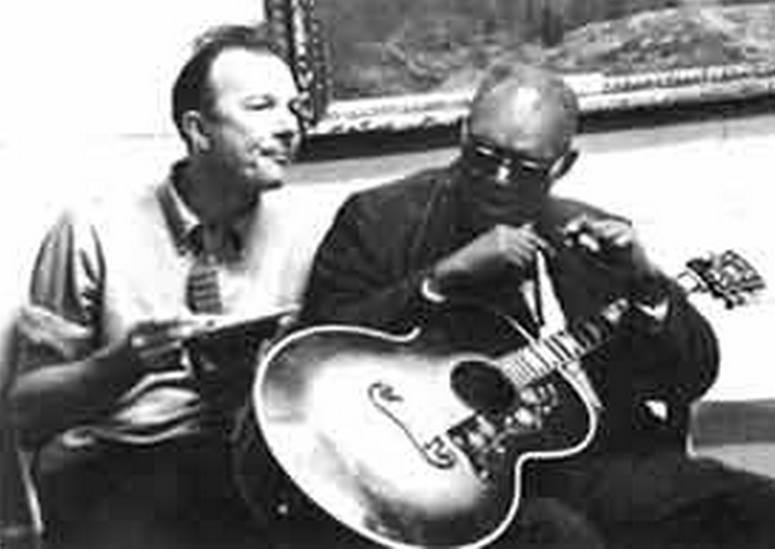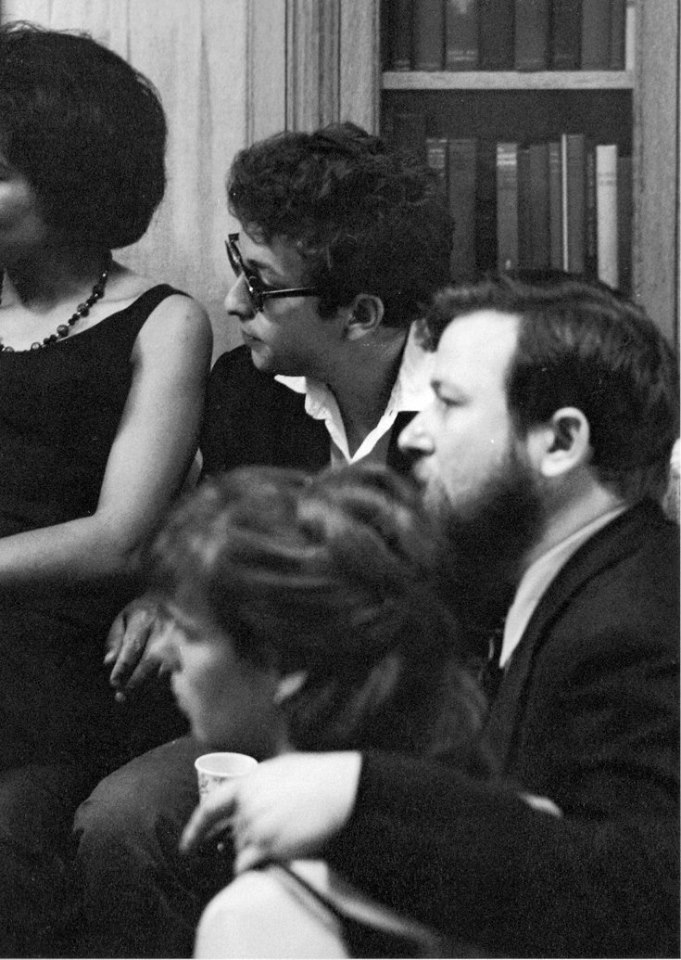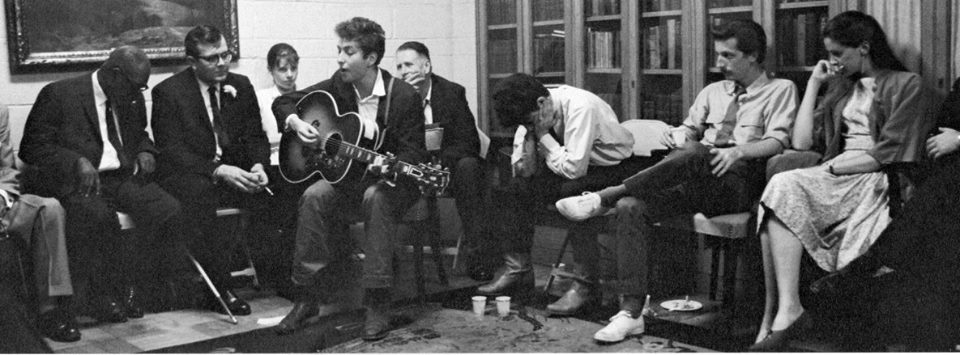“John Herald is sitting next to Mark Spoelstra the guy behind Dylan is ‘unknown’ at present.
Jud Strunk is Justin Roderick Strunk, Jr. (1936-1981) and used his family surname. But he was not Gil Turner’s brother. And it is not him at the wedding.
Jud Strunk was born in Jamestown, New York and he was raised in Buffalo, New York. He died in 1981 the pilot of a Fairchild M-62A N60542 WW II open cockpit airplane which crashed while attempting to take off. Cause was a heart attack.”
Source : https://www.facebook.com/photo.php?fbid=1162344080456574&set=oa.890354801003053&type=3&theater
“John Herald (1939-2005) of The Greenbriar Boys”
https://www.youtube.com/watch?v=Sk11fIq3TnE&feature=youtu.be

“Gordon Friesen (1909-1996) and Agnes Sis Cunningham were the founders of Broadside, the political song magazine that first published many of the most popular songs of the folk revival, including Bob Dylan and Phil Ochs. At its peak, Broadside appeared monthly, but as the folk revival lost momentum, its publication dwindled to bimonthly and ultimately semi-annually by the end of the 1960s. Although its circulation never exceeded four figures, the Friesens kept Broadside afloat until 1988, publishing 187 issues in all. Gordon Friesen and Agnes Sis Cunningham were also members of the Almanac Singers during the 1940s, a Greenwich Village folk music revival group.”
“Dubbing the magazine Broadside in tribute to the British tradition of printing songs on sheets of paper for sale on the streets, the couple assembled the first issue in their apartment in Manhattan’s Frederick Douglass housing project, inviting leftist-minded musicians to perform their most recent songs into a reel-to-reel tape recorder. Printed on a mimeograph machine once owned by the American Labor Party and smuggled out of the apartment via a baby carriage due to the illegality of running a business from their home, the first issue of Broadside appeared in February 1962, its six songs highlighted by “Talkin’ John Birch Society Blues,” the first Bob Dylan composition ever published. Dylan proved a Broadside regular, and the magazine’s sixth issue included his breakthrough song, “Blowin’ in the Wind,” published a year before Peter, Paul & Mary recorded their hit rendition.”
“Bob Dylan reacted to the killing of Hattie Carroll with his song “The Lonesome Death of Hattie Carroll”. In this case, the song was a direct reaction to the killing of Hattie Carroll, and her killer, who received only a six-month sentence. “The story came from a newspaper clipping Gordon Friesen gave Dylan… It was a report of the sentencing that sparked Dylan’s song.” Dylan wrote this song to protest not only the event, but also the larger problems of racism and corruption in the justice system. In this case, an event is used as an example of larger societal problems, but all of the things protested happened previous to the composition of the song, and were the direct causes of Dylan’s writing the song.”
Sis Cunningham and Gordon Friesen
Source : https://www.facebook.com/media/set/?set=oa.890354801003053&type=1&hc_location=ufi
[wp_ad_camp_2]





